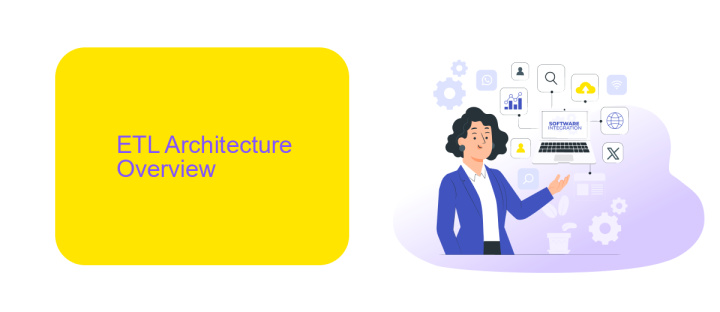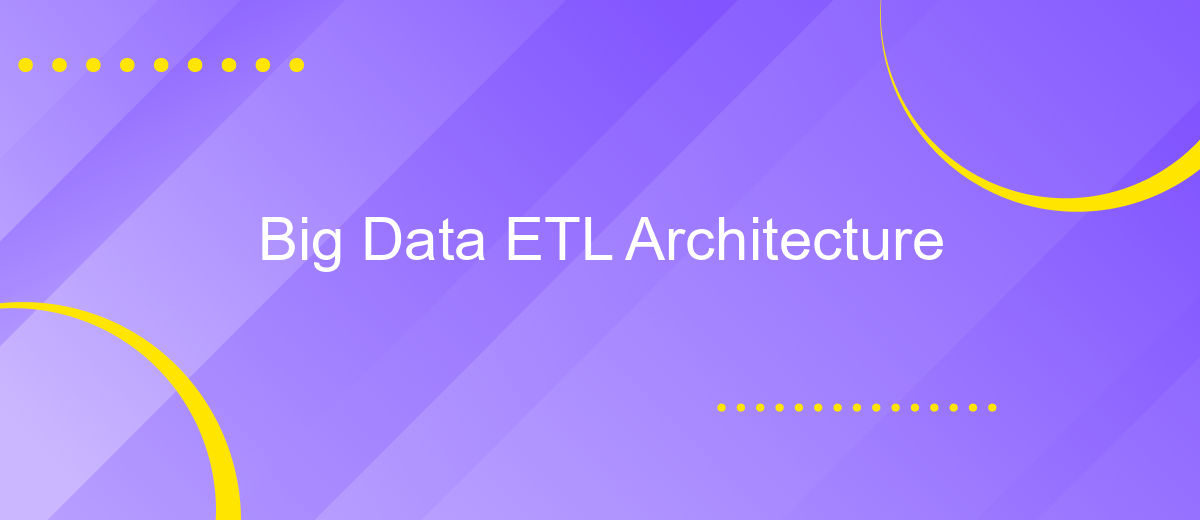Big Data ETL Architecture
Big Data ETL (Extract, Transform, Load) architecture is a critical framework for managing and processing vast amounts of data efficiently. It enables organizations to extract data from various sources, transform it into a usable format, and load it into storage systems for analysis. This article explores the key components, challenges, and best practices of Big Data ETL architecture.
Introduction
Big Data ETL (Extract, Transform, Load) architecture is a critical component in modern data management systems. It enables organizations to efficiently process and analyze large volumes of data from diverse sources. The primary goal is to extract relevant data, transform it into a suitable format, and load it into a data warehouse or other storage systems for further analysis.
- Extraction: Collecting data from various sources such as databases, APIs, and flat files.
- Transformation: Cleaning, filtering, and aggregating data to ensure it meets business requirements.
- Loading: Inserting the transformed data into a target system, such as a data warehouse or big data platform.
Effective ETL processes are essential for maintaining data quality and ensuring timely insights. Tools like ApiX-Drive can simplify the integration of diverse data sources, automating the extraction and loading phases. This automation reduces manual effort and minimizes errors, allowing businesses to focus on data analysis and decision-making. As data continues to grow in volume and complexity, a robust ETL architecture becomes indispensable for leveraging the full potential of big data.
ETL Architecture Overview

ETL (Extract, Transform, Load) architecture is a critical component in the management and analysis of Big Data. It involves extracting data from various sources, transforming it into a suitable format, and loading it into a data warehouse or other storage solutions. This process ensures that data is clean, consistent, and ready for analysis. The architecture typically includes data extraction tools, transformation engines, and loading mechanisms, all orchestrated to handle large volumes of data efficiently and reliably.
Modern ETL architectures often incorporate cloud-based services and automation tools to streamline integration and improve scalability. For instance, services like ApiX-Drive facilitate seamless integration between disparate data sources, enabling automated data extraction and transformation processes. By leveraging such tools, organizations can reduce manual intervention, minimize errors, and accelerate data processing workflows. This approach not only enhances the efficiency of ETL pipelines but also ensures that data remains up-to-date and readily accessible for business intelligence and analytics purposes.
ETL Process and Components

The ETL (Extract, Transform, Load) process is fundamental to Big Data architecture, enabling the seamless integration and management of large datasets. This process involves extracting data from various sources, transforming it into a suitable format, and loading it into a target database or data warehouse for analysis.
- Extract: This step involves gathering data from multiple sources such as databases, APIs, and flat files. Tools like ApiX-Drive can simplify this process by automating data extraction from various applications and services.
- Transform: During this stage, the extracted data is cleaned, normalized, and transformed into a consistent format. This may include filtering out irrelevant data, converting data types, and applying business rules.
- Load: Finally, the transformed data is loaded into a target system, such as a data warehouse or a data lake, where it can be accessed for reporting and analysis.
By leveraging tools like ApiX-Drive, businesses can streamline their ETL processes, ensuring data is accurately and efficiently integrated. This enhances the overall data quality and supports better decision-making through reliable data insights.
Big Data ETL Challenges and Solutions

Handling Big Data ETL processes comes with its own set of challenges. One of the primary issues is the sheer volume of data, which can overwhelm traditional ETL tools and processes. Additionally, the variety of data formats and sources complicates the extraction and transformation stages, making it difficult to maintain data quality and consistency.
Another significant challenge is the velocity at which data is generated. Real-time data processing requires robust systems capable of handling high-speed data streams without compromising performance. Ensuring data security and compliance with regulations such as GDPR also adds another layer of complexity to the ETL process.
- Scalability: Implement scalable cloud-based solutions to handle large data volumes.
- Data Integration: Use tools like ApiX-Drive for seamless integration of various data sources.
- Real-Time Processing: Employ stream processing frameworks such as Apache Kafka.
- Data Quality: Implement data validation and cleansing mechanisms.
- Security: Use encryption and access controls to protect sensitive data.
Despite these challenges, effective Big Data ETL architecture can be achieved through strategic planning and the use of advanced tools. Leveraging services like ApiX-Drive can simplify data integration, ensuring a smoother and more efficient ETL process. By addressing these challenges proactively, organizations can unlock the full potential of their data.


Best Practices and Case Studies
When designing a Big Data ETL architecture, it is crucial to prioritize scalability, reliability, and performance. Utilize distributed computing frameworks such as Apache Hadoop or Apache Spark to handle large volumes of data efficiently. Implement data validation and cleansing processes to ensure data quality. Additionally, consider using cloud-based solutions like Amazon Redshift or Google BigQuery for flexible and scalable storage options. Always monitor and optimize ETL processes to identify bottlenecks and improve performance.
A successful case study involves a retail company using ApiX-Drive to streamline their ETL processes. By integrating various data sources such as CRM, e-commerce platforms, and social media channels, the company could automate data extraction and transformation tasks. ApiX-Drive’s real-time data synchronization capabilities enabled the company to maintain up-to-date and accurate datasets, leading to more informed decision-making and improved customer insights. This approach not only reduced manual effort but also significantly enhanced data processing speed and reliability.
FAQ
What is Big Data ETL architecture?
How does ETL differ from ELT?
What are the key components of a Big Data ETL pipeline?
How can I automate and integrate my ETL processes?
What are some best practices for designing a scalable Big Data ETL architecture?
Do you want to achieve your goals in business, career and life faster and better? Do it with ApiX-Drive – a tool that will remove a significant part of the routine from workflows and free up additional time to achieve your goals. Test the capabilities of Apix-Drive for free – see for yourself the effectiveness of the tool.

